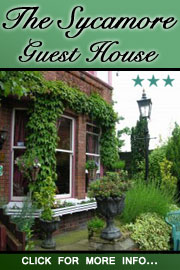St Marys Art Installation, Five Sisters
23 May - 1 November, 2009
How and why do we preserve objects from the past? What has value and what is it right to dispose of? These are questions that art critic and artist, Matthew Collings, and his collaborator, mosaicist, Emma Biggs, address in their work Five Sisters.
The starting point of their enquiry is the powerful beauty of the Five Sisters window in York Minster. Gleaming with a thousand variations of transparency, like mother of pearl, it is rigorously ordered, but also free, asymmetrical and unpredictable. The window has an anachronistic modernism - this visual appeal comes partly from a quality of restraint it must always have possessed, but also from a reinterpretation given by its careful preservation and repair.
Compared to other windows in the Minster it is noticeably muted. Individual panes of glass are dissimilar in tone and colour. A pane of glass breaks and someone carefully puts another in its place; centuries of being remade seems to have given Five Sisters a greater visual weight than something conceived from a single unitary viewpoint. Biggs and Collings' Five Sisters aims to reorder fragments of historical material in a similarly striking way.
Oil paintings done in collaboration (Biggs directing the colours, Collings doing the actual painting) and a huge mosaic - these are the materials of Five Sisters. Six thousand medieval pottery shards from the collection of York Art Gallery have been made available to them for the mosaic, which will cover almost the entire floor space of the church. Its design will be intricate: an abstract structure based on the window at York Minster.
The oil paintings will complement and echo the beautiful, shimmering, geometric appearance of the mosaic. After the exhibition, while the paintings will remain as an artistic record or trace of this enquiry, the mosaic will disappear, the fragments returning to the storerooms of York Art Gallery.
Five Sisters is about history. It is impossible for any work of art to express an idea free of a tradition, free from the ideology of the past and free from the labour of many others. Artists are never the sole creators of the work, and here the work of the hands that threw the pots and stuck on the handles, that stacked the kiln and applied the glaze, is part of what you see.
But you are also looking at the work of the archaeologists who unearthed the pots, the volunteers who cleaned them, the art gallery which has stored them, the taxpayers who have funded their preservation. This work is an accumulation of labour, of values, of aesthetics, of skills and knowledge. Biggs and Collings believe it's worth thinking about that.
Contact Information
Call now on +44 (0) 1904 687687 for more information




